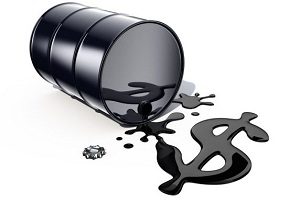
In view of the sharp fall in international oil prices in recent months, Standard and Poor’s has significantly revised down its oil price assumptions for 2015-18, affirming Kuwait’s AA/A-1+ rating.
“We are therefore affirming our ‘AA/A-1+’ long- and short-term foreign and local currency sovereign credit ratings on Kuwait,” the credit rating agency said in its report on Friday.
The stable outlook reflects our expectation that Kuwait’s fiscal and external positions will remain strong, backed by a significant stock of financial assets.
“We expect these strengths to offset risks related to the current volatile oil price, Kuwait’s undiversified oil economy, and what we assess as a volatile and unpredictable political system, in addition to geopolitical tensions in the region,” according to the report.
Prices for crude oil in spot and futures markets have fallen by around 50 percent since June 2014, leading us to revise down our oil price assumptions significantly. When we last reviewed Kuwait on August 15, 2014, we expected Brent oil prices to average USD 105 per barrel, or bbl, in 2015 and USD 98.75/bbl in 2015-18.
“We now assume an average Brent oil price of USD 55/bbl in 2015 and USD 70/bbl in 2015-18; Kuwait Crude (KEC) trades at a USD five discount to Brent. Consequently, we have also revised our forecasts for Kuwait, particularly for its fiscal and current account positions.
“Despite the sharp fall in the oil price, our ratings on Kuwait remain unchanged. The ratings continue to be supported by the sovereign’s high levels of accumulated wealth and very strong external and fiscal asset (stock) positions.” The Kuwaiti government, via the Kuwait Investment Authority (KIA), has accumulated substantial assets through oil and gas production over the years. It has also saved its oil wealth in what “we consider to be a prudent manner.
“The government’s large net asset position, which we estimate at over 2.8x GDP at the end of 2014 is a significant ratings strength providing a substantial buffer to lower oil prices.
“Our base-case scenario assumes that, despite the sharp fall in the oil price, OPEC will chose to broadly maintain its current oil production levels and, consequently, Kuwaiti oil output will remain at around 2.7 million barrels per day out to 2018,” the report went on.
There may be some upside if OPEC increases production quotas, and if Kuwait’s planned investment in the sector comes to fruition.
The general government budget has averaged a surplus of around 35 percent of GDP for the past decade, if we include investment income.
This has contributed to the net general government (and external) asset stocks. “If, in our forecasts, we include our estimate of the government’s income from its vast investments, the Kuwaiti government will continue to run (lower) surpluses of around 16 percent of GDP for the budget years 2015-18, despite lower oil prices.”
The 2015-16 proposed budget has a reduced spending plan of Kuwaiti dinar (KD) 19 billion, compared to a planned allocation of KD 23.2 billion in 2014-15.
Kuwait typically spends well below its proposed budgetary allocations and with the lower oil price will generate significant savings on the fuel subsidy bill. In addition, some large one-off costs incurred in 2014-15, such as social security fund top-ups, are unlikely to be repeated.
Strong oil exports led to current account surpluses averaging more than 37 percent of GDP in 2008-14, according to S&P estimates. “We forecast these surpluses will fall to an average of 19 percent in 2015-18.” Given the government’s policy of investing a large portion of its surplus abroad, we estimate Kuwait had a net external asset position of more than 400 percent of current account receipts (CARs) in 2014.
“We believe this will continue to rise in nominal terms and as a percentage of CARs – owing to ongoing external surpluses and reinvestment – but we note a distortion in the ratio due to a sharply declining denominator (current account receipts).
“At the same time, we project that gross external financing needs will remain relatively low, averaging around 67 percent of CARs plus usable reserves in the next four years.” Kuwait increased its annual contributions to the Future Generations Fund to 25 percent of total revenues in the fiscal year ending in March 2013, from 10 percent in previous years, because higher oil prices had produced strong revenues.
Now that oil prices are lower, “we expect transfers to the fund to fall significantly. The fund will still continue to grow on reinvested earnings and continued, albeit lower, contributions. Disclosure about the size and structure of the KIA’s assets is limited but the Sovereign Wealth Fund Institute estimates it at USD 550 billion in 2014.
“We estimate real GDP growth to average about two percent in 2015-18, but GDP per capita growth to contract by about one percent annually, partly because of high population growth.
“We estimate GDP per capita at USD 44,100 in 2015.” Kuwait’s exchange rate is pegged to an undisclosed basket of currencies, with a likely bias to the US dollar, which constrains its monetary flexibility.
“We view its monetary flexibility as limited although we acknowledge that the exchange rate regime is consistent with Kuwait’s reliance on US dollar-based oil revenues and that Kuwait has sufficient resources to defend the peg,” the report noted.
“Kuwait’s financial system remains fairly stable, in our view; its banks operate in a reasonably strong regulatory environment and have healthy capital levels.
The ratings are constrained by the country’s heavy reliance on oil, political risks, and regional geopolitical tensions.
“We could raise the ratings if political reforms were to enhance institutional effectiveness and improve long-term economic diversification, if geopolitical risks fade significantly, and prospects for the oil sector improve,” the report concluded.
Source : KUNA Kuwait News agency











